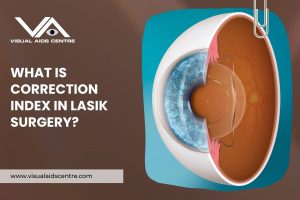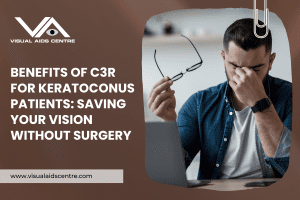Table of Contents
ToggleYes, you can play VR (Virtual Reality) after undergoing SMILE Pro Eye Surgery.
However, it’s important to follow your surgeon’s post-operative care guidelines to ensure proper healing and avoid complications.
The timing will vary depending on individual recovery, but most people can return to VR after a few weeks of resting their eyes and adjusting to their new vision.
If you’ve recently undergone SMILE (Small Incision Lenticule Extraction) Pro—a cutting-edge laser eye surgery designed to correct conditions like short-sightedness—chances are you’re eager to experience your new, glasses-free vision. However, for those in the gamer and VR community, the question remains: Is it safe to jump back into immersive VR experiences after undergoing this procedure? This guide explores everything you need to know about using VR safely, how SMILE Pro works, and the steps to follow for a smooth recovery.
What is SMILE Pro Eye Surgery?
SMILE Pro Eye Surgery is a minimally invasive laser eye surgery that reshapes the cornea to improve vision. Unlike LASIK, which requires a larger flap, SMILE Pro uses a small incision to remove a tiny lenticule of corneal tissue. The procedure is known for being quick, effective, and less invasive, which translates to a faster recovery for most patients.
Key Benefits of SMILE Pro Surgery:
- Less invasive due to the small incision.
- Reduced risk of dry eyes compared to LASIK.
- Faster healing and recovery time.
- Ideal for active individuals, including gamers.
Because it allows for a quicker visual recovery and less discomfort, SMILE Pro is particularly appealing to people with busy lifestyles.
Why Is VR Use a Concern After Surgery?
Virtual Reality gaming involves prolonged screen exposure, rapid eye movements, and the potential for glare and eye strain—all of which can pose challenges for recovering eyes after SMILE Pro surgery. Some reasons why VR usage is a concern include:
- Eye Strain: Focusing on VR environments can put additional strain on healing eyes, potentially delaying recovery.
- Dryness and Irritation: Extended time spent wearing VR goggles can worsen post-operative dryness, a common side effect.
- Light Sensitivity: Adjusting to bright or flickering visuals might be uncomfortable during the initial healing period.
- Disruption to Healing: Ongoing exposure to screens too soon after surgery may irritate the cornea or slow down the healing process.
Your eyes need time to recover fully from the surgical reshaping of the cornea, which is why avoiding intense screen usage—including VR—is essential during the early stages.
When Can You Safely Play VR After SMILE Pro?
The timeline for resuming VR gaming after SMILE Pro surgery varies from person to person. Here’s a general guideline:
1-3 Days After Surgery
It’s recommended to avoid any screens entirely during this time. Your primary focus should be resting your eyes and following your surgeon’s prescribed care routine. Use lubricating eye drops as advised to combat dryness, and avoid strenuous activities or environments that strain your vision.
First Week Post-Surgery
During the first week, you’ll likely be allowed limited screen use, such as checking your phone or watching TV for short periods. However, VR is still not advisable. The increased field of focus and prolonged usage could strain your recovering eyes.
2-4 Weeks Post-Surgery
By this point, your vision should start to stabilise, and many people find themselves able to get back to light gaming. Consult your ophthalmologist about safely resuming VR at this stage, as every individual’s recovery varies.
1 Month or More
Most patients can confidently return to VR gaming after four weeks, provided their vision is clear and they’re free of symptoms like dryness, glare, or discomfort. Still, always be mindful of taking breaks to avoid overstraining your eyes.
Tips for Safely Returning to VR Gaming
If your doctor has approved your return to VR gaming after SMILE Pro, keep the following tips in mind to ensure a smooth transition:
1. Take It Slow
Start with shorter VR sessions. Limit your playtime to around 15-20 minutes initially, gradually increasing the duration as your eyes adapt.
2. Use Lubricating Eye Drops
VR headsets can exacerbate dryness, especially when the goggles sit close to your face. Use the lubricating eye drops prescribed by your doctor before and after playing to maintain comfort and hydration.
3. Adjust Headset Settings
- Reduce the brightness of your display to a comfortable level.
- Maintain optimal headset alignment to avoid unnecessary strain on your cornea.
- Ensure the game settings minimise rapid eye movement or intense graphics.
4. Take Regular Breaks
Follow the 20-20-20 rule to prevent eye strain. After 20 minutes of VR gaming, look at an object 20 feet away for 20 seconds.
5. Check for Glare and Light Sensitivity
If glare or sensitivity is an issue, consider anti-glare VR headset covers or room lighting adjustments to lessen the impact on your eyes.
6. Monitor for Discomfort
Pay attention to any signs of discomfort, such as blurred vision or irritation. Stop immediately and consult your doctor if these symptoms persist.
7. Prioritise Cleaner Equipment
VR goggles can harbour bacteria, which could pose an infection risk for healing eyes. Clean your equipment regularly and avoid sharing your headset during recovery.
Benefits of Playing VR After SMILE Pro Surgery
Once your eyes have fully recovered, experiencing VR without the hassle of glasses can be incredibly freeing and enjoyable for gamers. Here’s why:
- Enhanced Immersion: No more adjusting your headset to accommodate glasses—just full focus on the experience.
- Improved Comfort: Wearing contact lenses or glasses inside VR goggles is cumbersome, but post-surgery, you can game comfortably.
- Sharper Visuals: With clear, corrected vision, you’ll notice every detail in gameplay, boosting your performance and enjoyment.
Frequently Asked Questions About SMILE Pro Surgery and VR Gaming
Can VR damage my vision after SMILE Pro surgery?
If used responsibly and after proper healing, VR gaming should not damage your vision. However, overuse during the initial recovery period may strain or irritate healing eyes.
Are there any vision-related side effects to be aware of after SMILE Pro?
Common temporary side effects include glare, dry eyes, and sensitivity to light, which typically resolve within a few weeks. Ensure these symptoms have subsided before returning to VR gaming.
What should I do if I experience discomfort while playing VR?
Stop immediately and rest your eyes. Use lubricating drops if recommended and reduce gaming time in future sessions. Consult your ophthalmologist if the discomfort persists.
Can other types of gaming be resumed sooner?
Yes, non-VR gaming on conventional screens may be resumed earlier, as long as sessions are kept short and you follow your surgeon’s advice. Always prioritise games with minimal rapid eye movements.
Final Thoughts
Playing VR after SMILE Pro Eye Surgery is possible and safe—as long as you allow your eyes adequate time to heal and adhere to best practices for post-surgery care. Patience is key here. Jumping back too soon can lead to complications, whereas taking the right precautions ensures a safer, more enjoyable experience once you’re ready.
Always seek guidance from your ophthalmologist to customise your recovery plan, especially if you have specific concerns or complications. Once you’re cleared, you’re all set to experience immersive VR gameplay with the added advantage of clear and precise vision—no glasses or contacts required.
If you have any more questions, consult your healthcare provider. Happy gaming, and take care of those eyes!













